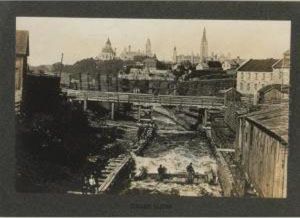William James Topley Paintings
William James Topley was a prominent Canadian photographer known for his portraits that captured the essence of Canada's political, social, and cultural life in the late 19th and early 20th centuries. Born on February 13, 1845, in Montreal, Quebec, Topley showed an early interest in photography, which was then an emerging and rapidly evolving art form.
In 1864, at the age of 19, Topley moved to Ottawa to work as an apprentice under William Notman, a well-known Scottish-Canadian photographer. This was a pivotal experience for Topley, as Notman was renowned for his skill in portraiture and for having a large, successful studio. Topley learned the craft of photography here, and his work under Notman played a significant role in the development of his artistic style and technical proficiency.
In 1868, Topley opened his own studio in Ottawa, quickly establishing himself as one of the premier portrait photographers in the country. His portraits of politicians, dignitaries, and the Canadian elite were particularly notable for their clarity, attention to detail, and the ability to convey the personality and stature of the sitters. Topley's work provides a valuable visual record of Canadian society during a time of significant transformation and growth.
Throughout his career, Topley was also involved in various photographic projects beyond portraiture. He documented the construction of the Canadian Pacific Railway, took landscape photographs, and created composite images that were popular at the time. His photographs were not only works of art but also important historical documents that contributed to the Canadian national identity.
Topley continued to work until the early 20th century, but with the advent of newer photographic technologies and changes in public tastes, he struggled to maintain the prominence of his earlier years. He eventually closed his studio in 1924 and died on November 16, 1930, in Vancouver, British Columbia. Today, William James Topley's photographs are held in high esteem, and his work is preserved in various institutions, including the Library and Archives Canada, which holds a significant collection of his prints and negatives.
